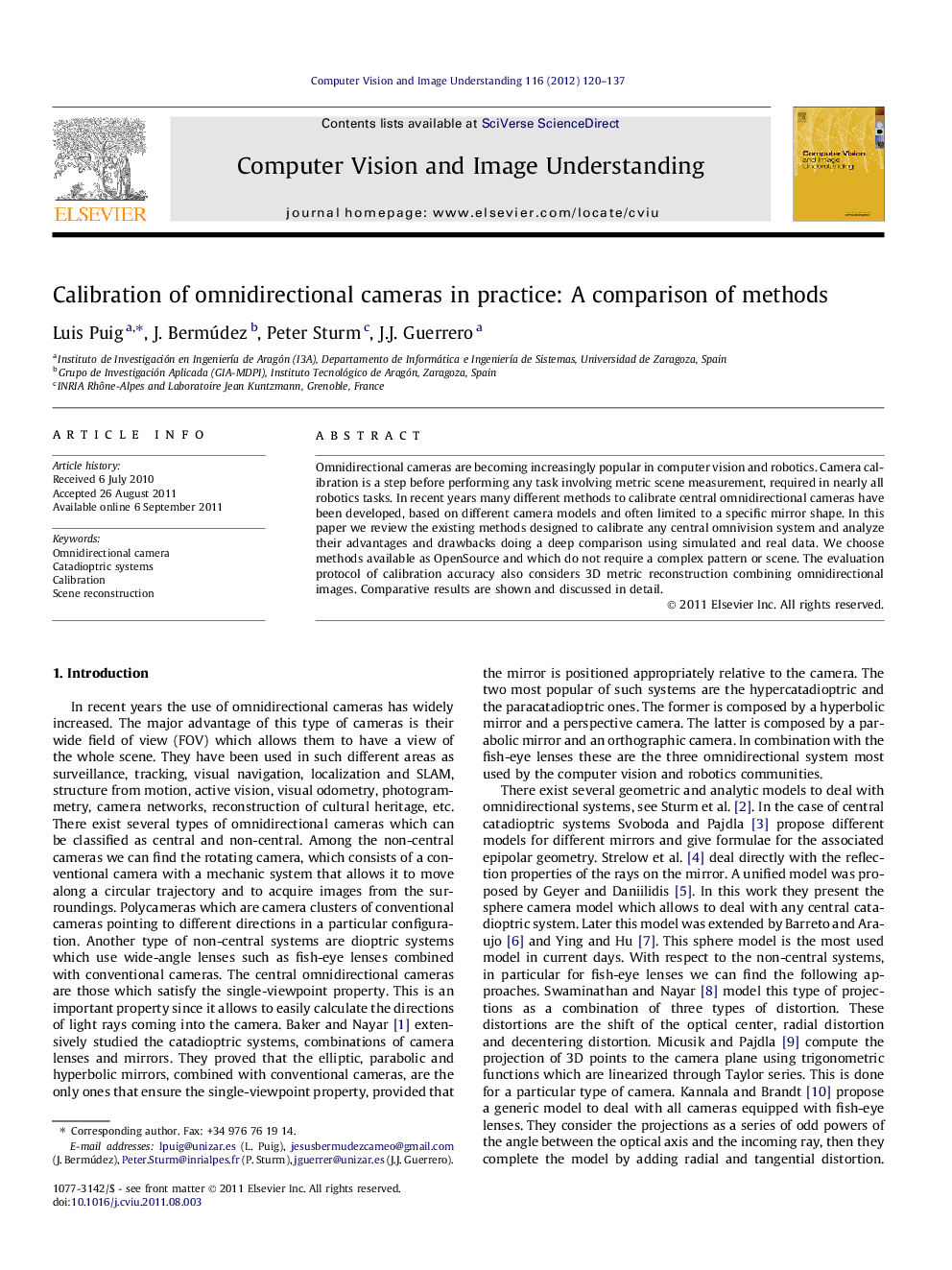| Article ID | Journal | Published Year | Pages | File Type |
|---|---|---|---|---|
| 526004 | Computer Vision and Image Understanding | 2012 | 18 Pages |
Omnidirectional cameras are becoming increasingly popular in computer vision and robotics. Camera calibration is a step before performing any task involving metric scene measurement, required in nearly all robotics tasks. In recent years many different methods to calibrate central omnidirectional cameras have been developed, based on different camera models and often limited to a specific mirror shape. In this paper we review the existing methods designed to calibrate any central omnivision system and analyze their advantages and drawbacks doing a deep comparison using simulated and real data. We choose methods available as OpenSource and which do not require a complex pattern or scene. The evaluation protocol of calibration accuracy also considers 3D metric reconstruction combining omnidirectional images. Comparative results are shown and discussed in detail.
► Survey of four calibration methods for central catadioptric systems. ► Three different central catadioptric systems and one non-central fish-eye lens were calibrated. ► An structure from motion experiment was performed to evaluate the accuracy of each method. ► An analysis on the influence of the field of view on the calibration of such systems was performed.
